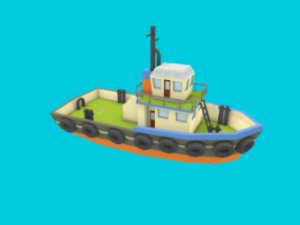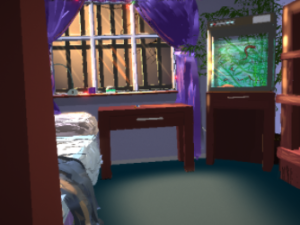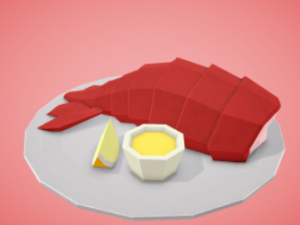 Google is a veritable technology titan, coming out with 3D creations like the Smart Bathroom, Jump for VR, and Google Tilt Brush, and providing high-profile funding to big-name 3D printing companies including Carbon and Desktop Metal, along with a grant to volunteer organization e-NABLE. Tools and support from Google showcase a dedication to developing future technologies, many of which are in 3D.
Google is a veritable technology titan, coming out with 3D creations like the Smart Bathroom, Jump for VR, and Google Tilt Brush, and providing high-profile funding to big-name 3D printing companies including Carbon and Desktop Metal, along with a grant to volunteer organization e-NABLE. Tools and support from Google showcase a dedication to developing future technologies, many of which are in 3D.
Game developers building for augmented reality (AR) and virtual reality (VR) know that good 3D objects are a necessary part of the apps – to that end, Google is now launching Poly, a home for 3D objects.
“With Tilt Brush and Blocks, we’ve made 3D creation easier,” Poly Product Manager Andrea Zvinakis wrote in a Google blog post. “Now, we want to enable creators and developers to build on everyone’s work. That’s why we created Poly: one place to browse, discover and download 3D objects.”
 Poly was built for creators, by creators, to make their jobs a little easier. The platform was built with AR and VR development in mind, and is fully integrated with its 3D VR creation tools Tilt Brush and Blocks; it also allows for direct OBJ file uploads. The app is basically an easy one-stop shop for 3D objects and scenes, which goes hand-in-hand with Google’s original mission statement to “organize the world’s information.”
Poly was built for creators, by creators, to make their jobs a little easier. The platform was built with AR and VR development in mind, and is fully integrated with its 3D VR creation tools Tilt Brush and Blocks; it also allows for direct OBJ file uploads. The app is basically an easy one-stop shop for 3D objects and scenes, which goes hand-in-hand with Google’s original mission statement to “organize the world’s information.”
Feel like creating a garden filled with AR flowers, setting up a space walk, or going back in time to the 1990s? No problem – Poly offers all of the ingredients necessary to set the scene.
 To get things started, and encourage users to explore, download, create, and upload content, Google commissioned artists to create thousands of 3D objects so you can “quickly and easily find what you’re looking for.”
To get things started, and encourage users to explore, download, create, and upload content, Google commissioned artists to create thousands of 3D objects so you can “quickly and easily find what you’re looking for.”
Poly has tons of free models available for you to use in your AR and VR apps – ice cream cones, animals, instruments, houses and rooms, and even household appliances. You can also remix a lot of the available models – just click ‘like’ to import one into Blocks or Tilt Brush and make any changes you want. Once you’ve published the completed remix, Poly will automatically credit, and link back to, the original object, keeping in mind the importance in this digital age of appropriate attribution for designs.
- Boat – Poly by Google
- 90’s VR Bedroom – Justin Randall
- Lobster Tail – Poly by Google
A lot of the 3D objects, especially the ones published by Google’s Poly, have the low-polygon style that Blocks users are used to seeing. While Google says this was “partially a stylistic choice,” the style will also work really well with the company’s Daydream VR platform, which is more efficient when it’s rendering simpler objects.
Developers will definitely use Poly to search for 3D assets, but anyone else can use the platform simply to view 3D objects in a desktop, or mobile, browser. If you find one you really like, you can use Google’s Daydream or Cardboard to see it in VR, or create a shareable GIF of the object.
For the time being, Google is focused on offering free models in its discovery platform, rather than being a place for 3D creators to sell their own objects to developers. You can sign up here to preview the API when it’s available, and don’t forget to check out the video to learn more.
Discuss this and other 3D printing topics at 3DPrintBoard.com or share your thoughts in the Facebook comments below.
[Images: Poly]
Subscribe to Our Email Newsletter
Stay up-to-date on all the latest news from the 3D printing industry and receive information and offers from third party vendors.
You May Also Like
Precision at the Microscale: UK Researchers Advance Medical Devices with BMF’s 3D Printing Tech
University of Nottingham researchers are using Boston Micro Fabrication‘s (BMF) 3D printing technology to develop medical devices that improve compatibility with human tissue. Funded by a UK grant, this project...
3D Printing Webinar and Event Roundup: April 21, 2024
It’s another busy week of webinars and events, starting with Hannover Messe in Germany and continuing with Metalcasting Congress, Chinaplas, TechBlick’s Innovation Festival, and more. Stratasys continues its advanced training...
3D Printing Webinar and Event Roundup: March 17, 2024
It’s another busy week of webinars and events, including SALMED 2024 and AM Forum in Berlin. Stratasys continues its in-person training and is offering two webinars, ASTM is holding a...
3D Printed Micro Antenna is 15% Smaller and 6X Lighter
Horizon Microtechnologies has achieved success in creating a high-frequency D-Band horn antenna through micro 3D printing. However, this achievement did not rely solely on 3D printing; it involved a combination...
































